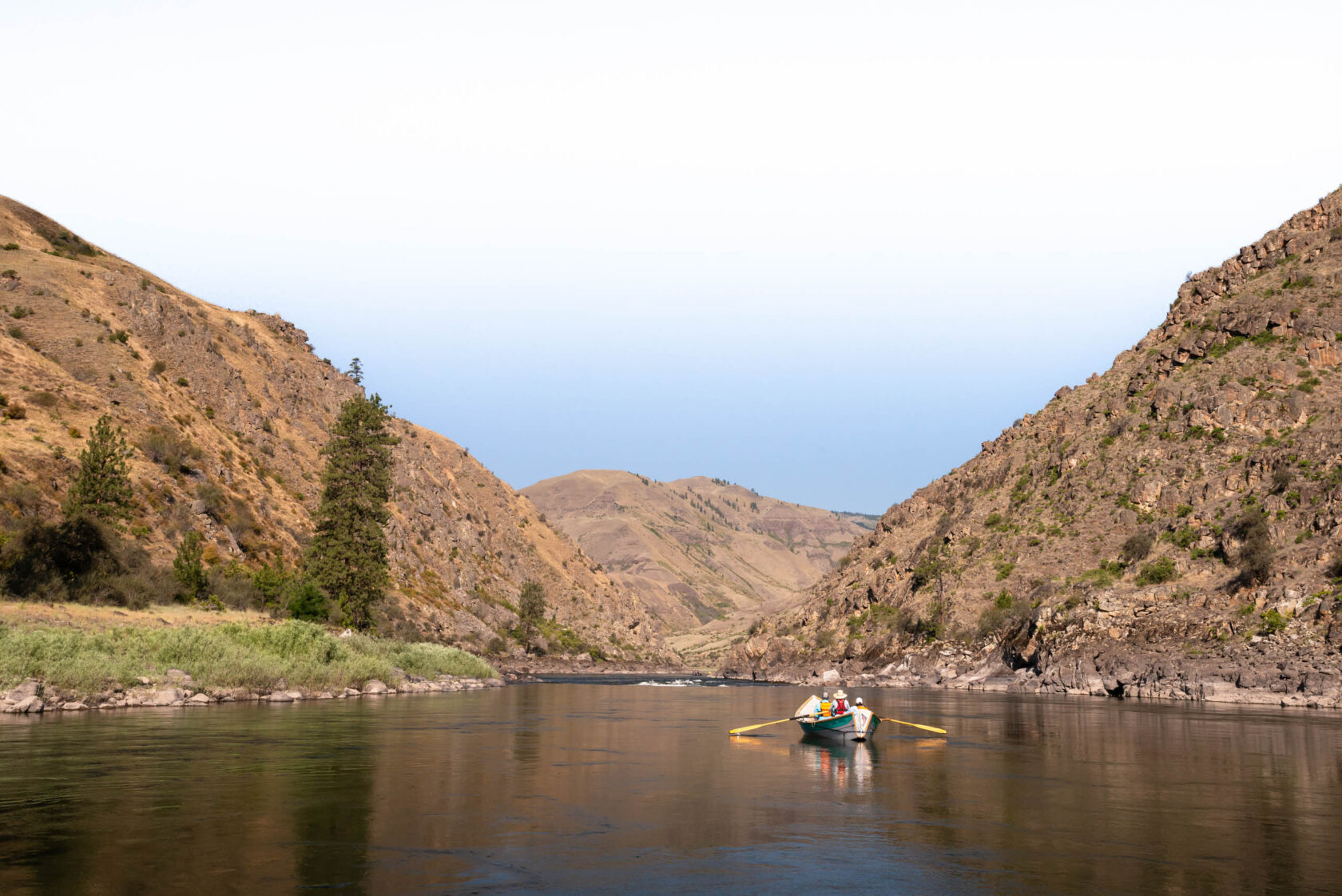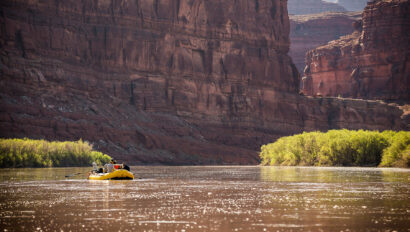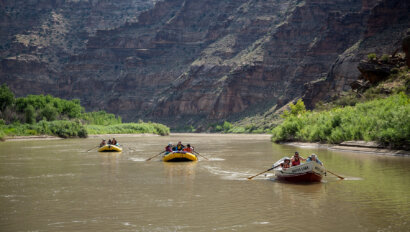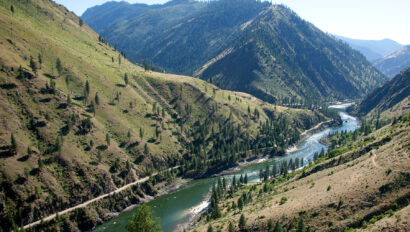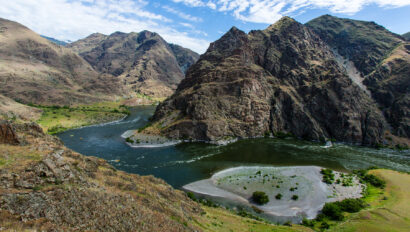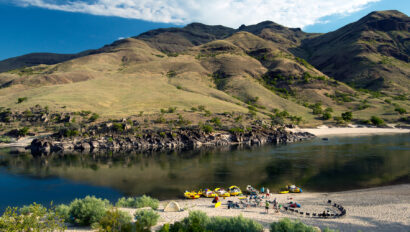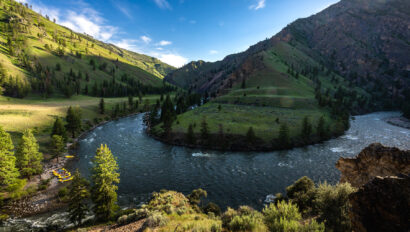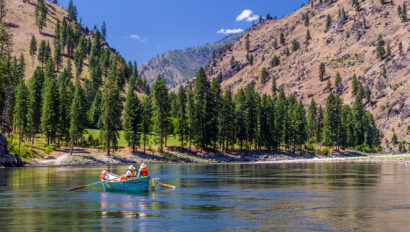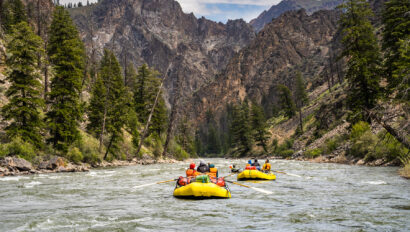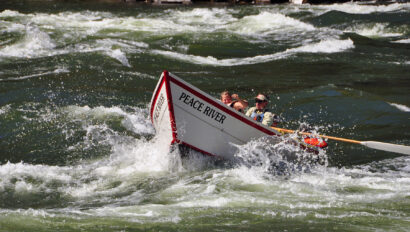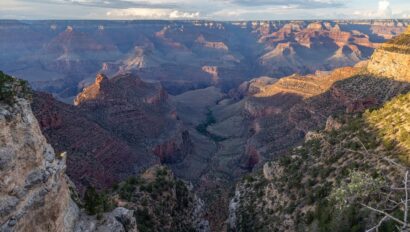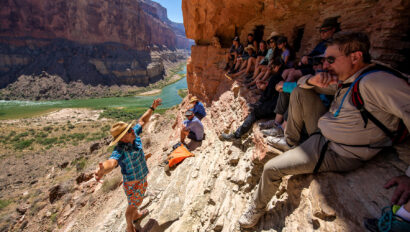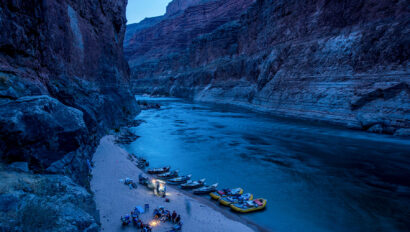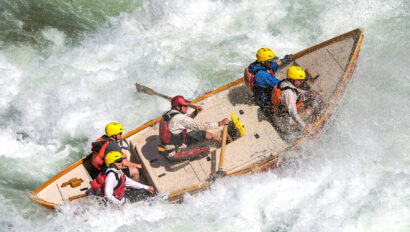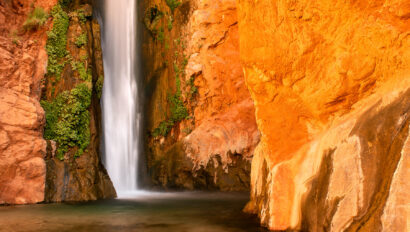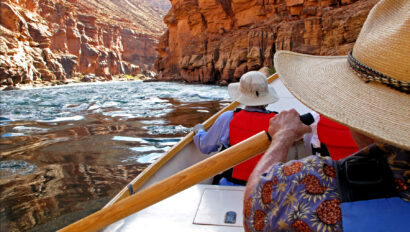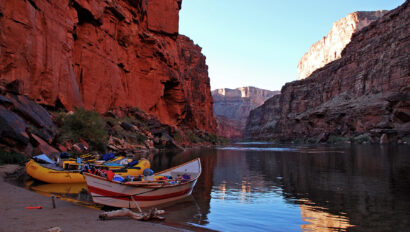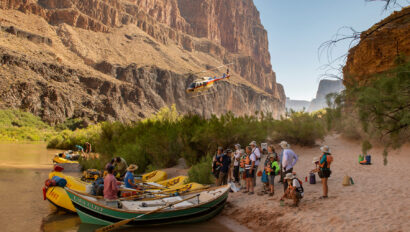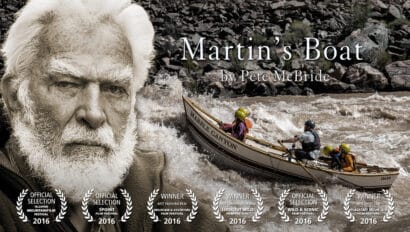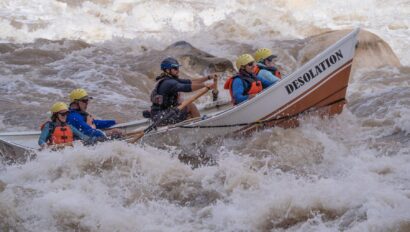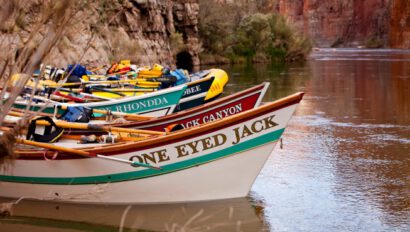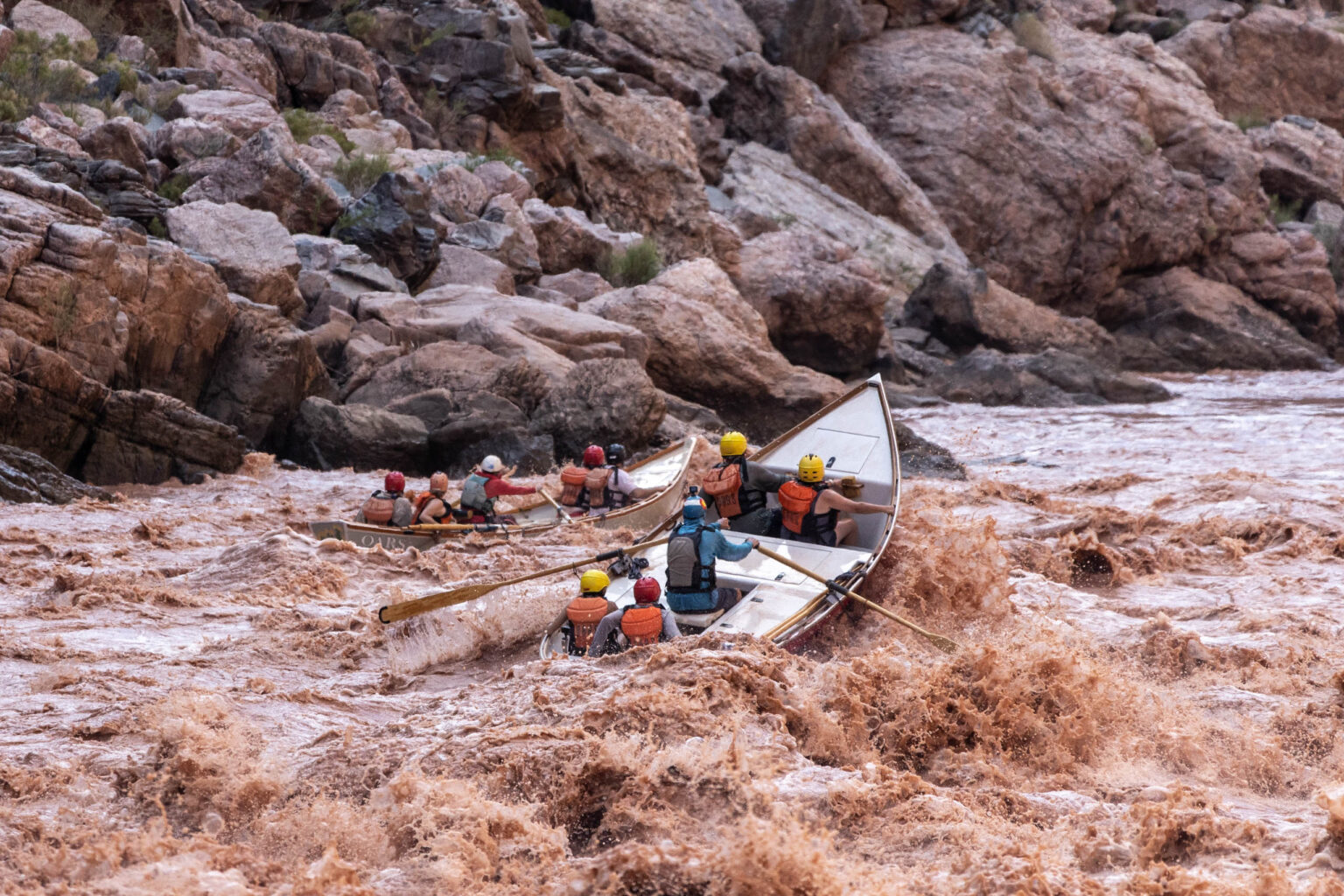
Dory Trips with OARS
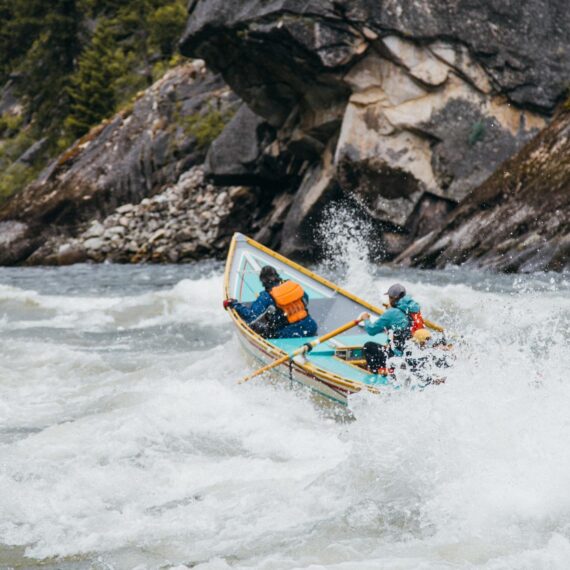
The RiDe
In rippling waters and inconsistent currents—conditions that would make other vessels more unruly—a dory is unbelievably sleek and lounge-like. They’re naturally smooth sailing. Decked over, there is room for hundreds of pounds of gear, dry and out of sight. Above board, there’s ample space for four passengers and a central cockpit for a guide manning two powerful oars. Made famous in Grand Canyon by Martin Litton’s Grand Canyon Dories, dories are also used by OARS on the Snake River, the Salmon River and the Colorado River through Cataract Canyon.
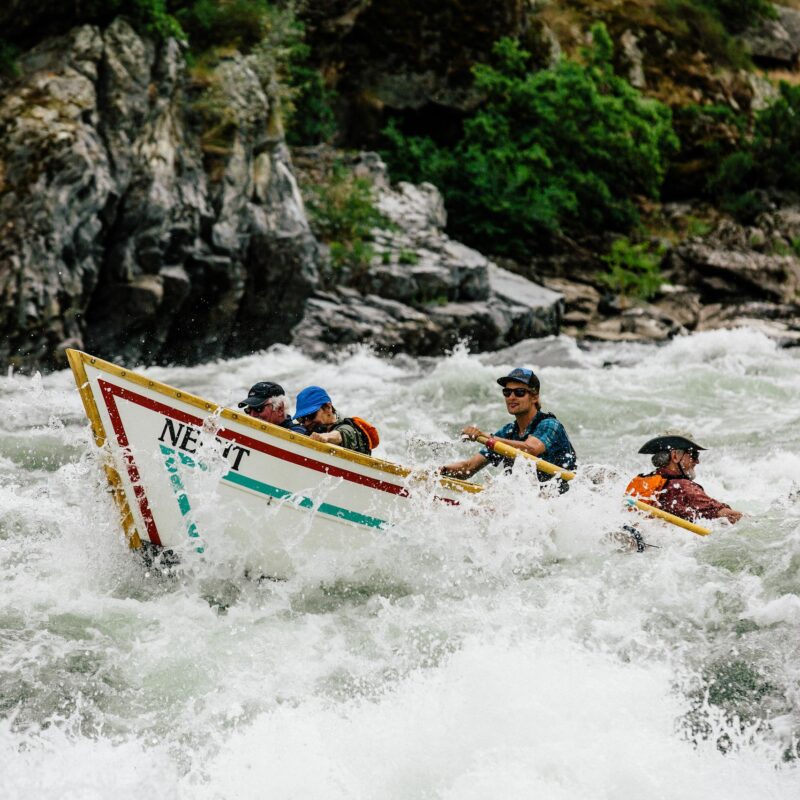
The Dory Experience
If it is indeed true that experience is the best teacher, there is no greater means than by dory to experience—not just see—some of America’s greatest rivers.
Dories are designed with a blend of rationale, romanticism and adrenaline. No other boat is as capable or elegant on the wild waters of the American West. Beyond the stout, thoughtful design, dories hold a soulful connection to the river and a heritage of western exploration. Combined, the qualities of the vessel make for an unmatched and unforgettable journey.
Hand-crafted using fiberglass and closed-cell foam, or in some cases aluminum, dories are hard-hulled and ultra-buoyant. At an elegant 17 feet, dories slice through waves and buck through rapids and land large drops with ease (and more than enough splash). They’re also fine-tuned to provide classic amenity.
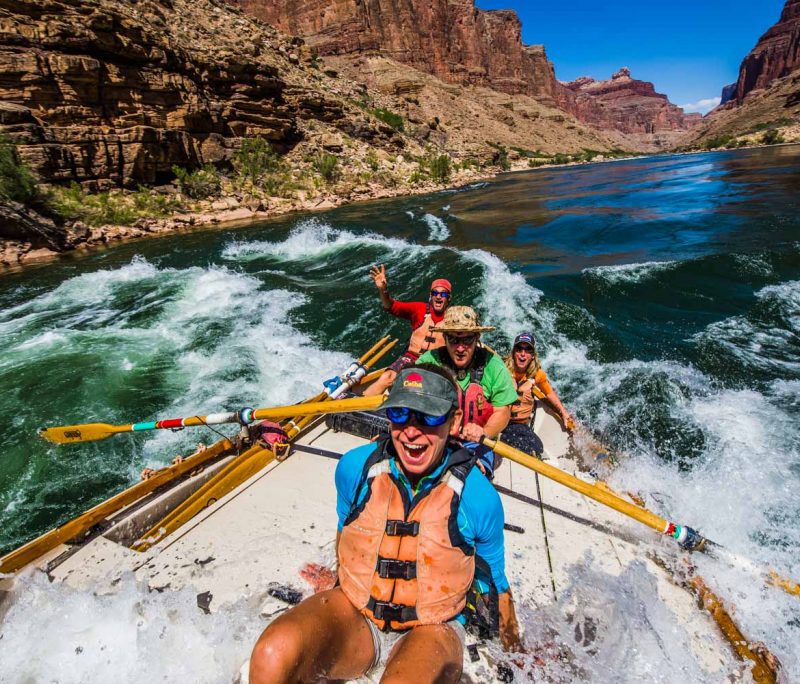
The Dory Story
Our dory boats are descendants of the original Portuguese fishing dory—a flat bottomed, splay-sided rowboat with high upturned ends. How we came to use this stable seagoing boat on the wild rivers of the West is rather a roundabout tale: our favorite kind to tell…
Let’s start back in 1869, when Major John Wesley Powell first explored the uncharted canyons of the Colorado. The art of whitewater rowing had yet to be born and Powell’s boats bore little resemblance to dories. His were keeled cutwater boats with two men rowing hard downstream. Another man in the back attempted to steer with a long sweep oar. With bravery, luck, persistence and much portaging, Powell and the expeditions that followed him were able to navigate the Green and Colorado Rivers in these heavy, unwieldy boats.
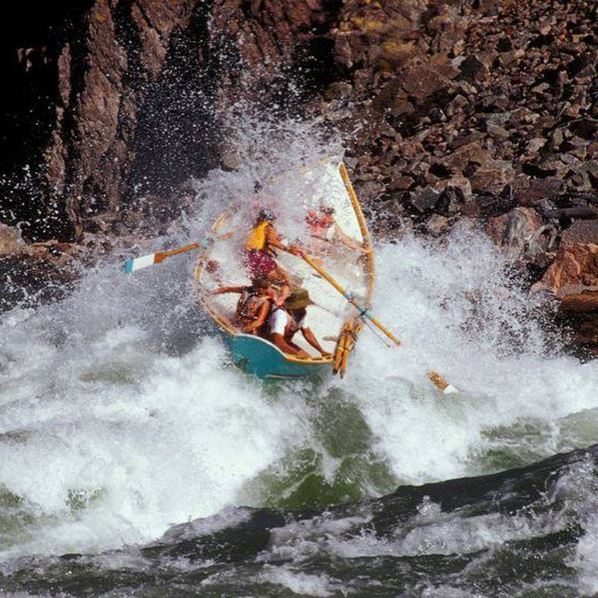
A Revolution in Whitewater boating
In the 1890’s, a Utah trapper named Nathaniel Galloway revolutionized whitewater boating. By going to a light, flat bottomed boat and rowing upstream, against the current, to increase maneuverability, Galloway was able to navigate rapids previously thought unrunnable. Both his style of boat and his stern-first rowing technique proved far more successful than Powell’s and predominated during the early part of the 20th century.
In the late 1930’s, Norman Nevills took the next step by creating a far broader craft called a Cataract boat. Rowing Galloway-style, he used these boats on the first commercial Grand Canyon river trip in 1938. Though the Cataract boats were run in the Canyon for more than thirty years, their poor carrying capacity forced them to succumb to the new competition: inflatables.
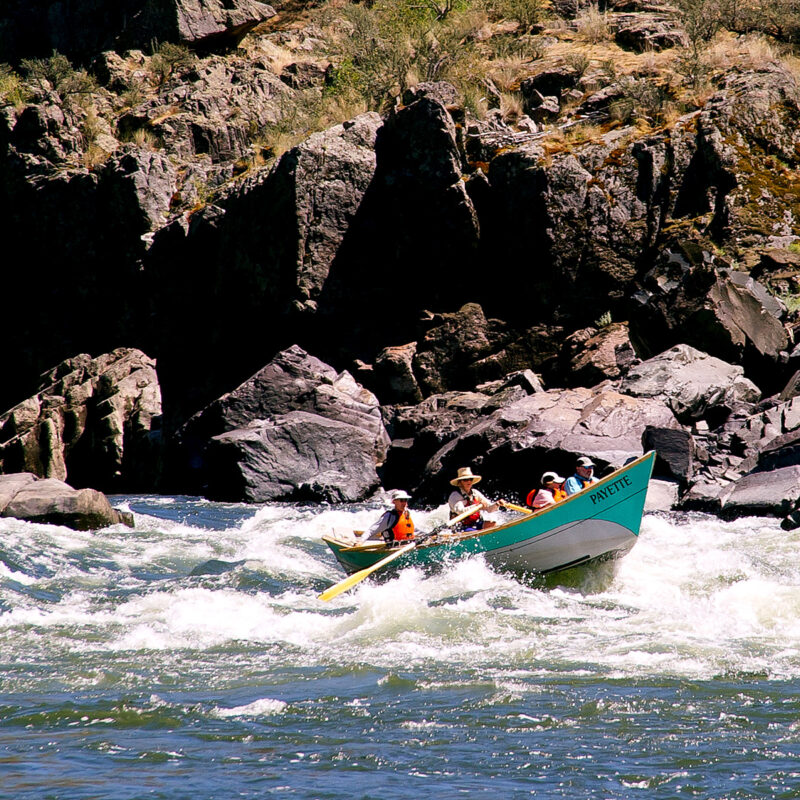
CHANGES IN DESIGN
Introduced the same year as the Cataract boat, the raft was hard to argue with—it bounced off rocks, held more people and gear and rolled up into a bundle for easy transport. And with a motor on a huge raft, why you could take twenty people or more through the Canyon in a week!
It was over in Oregon on the McKenzie River that the river dory began to evolve. In the 1920’s, Torkel Kaarhus, a Norwegian boat builder, began to modify the awkward flat plank boats then in use. He bent the ends up, giving the boats “rocker” and making them easier to spin. He raised the low square stern to help ward off the waves.
A few years later, Woodie Hindman, who got his start with Kaarhus, began to modify the design. After running a trip on the Middle Fork of the Salmon River with its bigger rapids, he returned to Oregon determined to design a better whitewater dory. First, he converted the high square stern into a higher, pointed stern to better cut through the waves. Next, he squared off the low pointed bow to accommodate a motor. In a sense, he turned the boat around backwards. Lastly, he lengthened the boat for better handling. This became the McKenzie-style dory, or “drift boat,” which is now common on rivers throughout the Northwest.
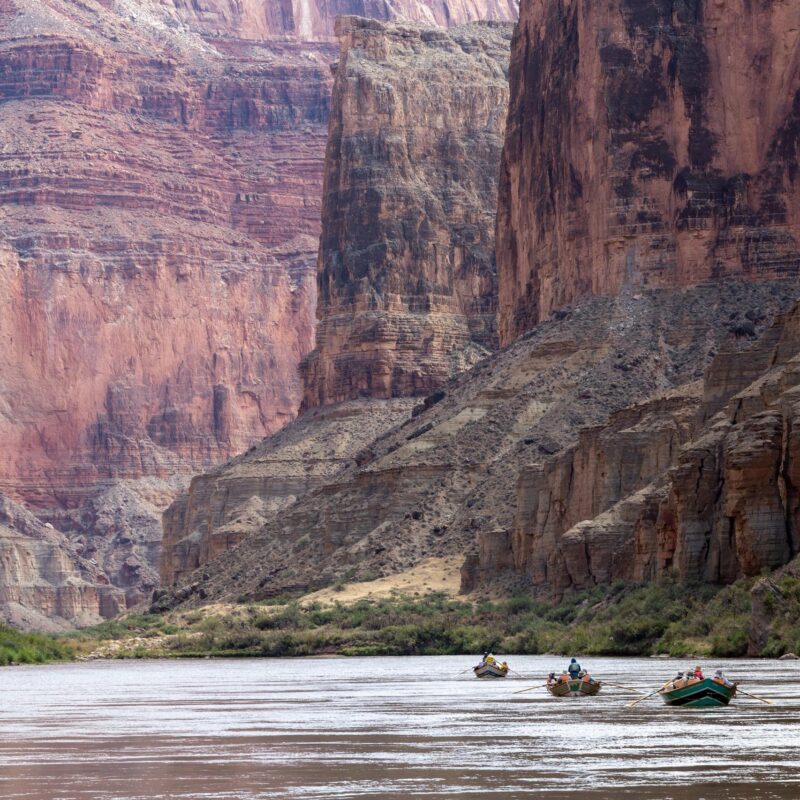
Grand Canyon Dories
In the Grand Canyon of the 1960’s, two veteran rowers of the old Cataract boats, Martin Litton, and P.T. Reilly, saw the need for a more practical craft, but wanted to preserve the dignity and grace of the wooden boat. Why not the dory?
They worked with boat builders Keith Steele, and later, Jerry Briggs, developing larger, decked-over versions of the McKenzie dory. They found them to be perfectly adapted to the rigors of Grand Canyon. Moreover, it could carry four passengers and, below the decks, plenty of gear. Early in the 1970’s, Martin Litton began rowing them commercially, founding Grand Canyon Dories. Before long with the help of Grand Canyon dory guide Curt Chang, Litton had brought them full circle, back to the Northwest and the rivers of Idaho.
Following a tradition started by Martin Litton, every OARS dory is named after a wild place that was lost or compromised by the hand of man, like the Emerald Mile, Dark Canyon, Roaring Springs, and Tenaya.
Few can resist the dory’s charm. As Martin said, “They are, in a word, beautiful.”
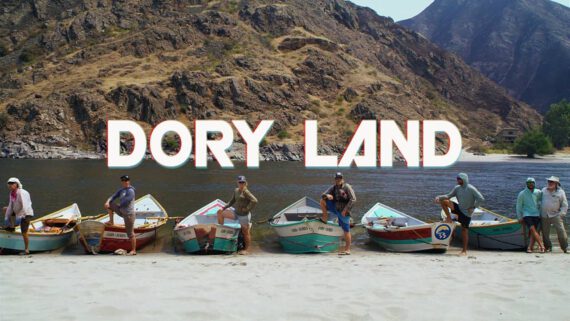
See the movie:
To mark the 50th anniversary of the first commercial dory trips in Idaho, OARS is pleased to present Dory Land, a new film that is at once a celebration and a love story to Idaho’s rivers and guides. The film by Logan Bockrath takes an inside look at the community built in Idaho around wooden boats and free-flowing rivers over the last 50 years.
Find Your Perfect Trip
Dory Trips
Discover your next OARS Adventure
